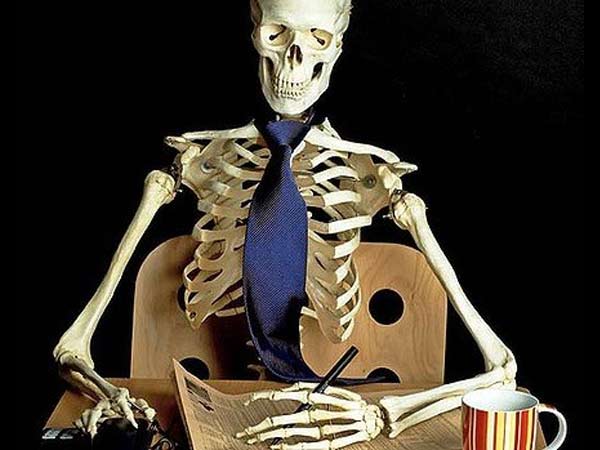Could a less sedentary lifestyle help to beat osteoporosis?
The effects on osteoporosis of prolonged periods of sitting – and the potential impact of less sedentary behaviour – are being explored in research led at the University of Strathclyde.
 The academics are investigating whether extended periods of sitting, in a controlled laboratory setting, lead to increased bone loss, and whether breaking up sedentary behaviour has the opposite effect.
The academics are investigating whether extended periods of sitting, in a controlled laboratory setting, lead to increased bone loss, and whether breaking up sedentary behaviour has the opposite effect.
They are expanding on their earlier research which demonstrated that prolonged sedentary behaviour could have an adverse effect on the hip bone mineral density of women.
The findings will have the potential to inform and shape future public health policy and physical activity guidelines aimed at improving bone health.
The study also involves colleagues at Glasgow Caledonian University, the University of Birmingham, the University of East Anglia and the Baker Heart and Diabetes Institute in Melbourne.
Dr Alexandra Mavroeidi, a Senior Lecturer in Physical Activity for Health in Strathclyde’s School of Psychological Sciences & Health, is leading the study. She said: “Prolonged sedentary behaviour is a major and growing public health concern, but its role specifically in relation to bone loss and osteoporosis is not known.
“We know that in extreme environments, such as total bed rest, bone loss is very high. In everyday life, long periods of immobility such as this are rare; however, sedentary lifestyles are commonplace in modern society, through transport, work and leisure.
“Studies have shown that self-reported sedentary behaviour throughout the day is as much as six to eight hours and this increases to eight to 10 hours in older adults. We were the first to show that this type of behaviour might have an adverse effect on women’s hip bone mineral density.
“We are now aiming to test this further and see if extended periods of sitting in a controlled laboratory setting have an immediate acute effect on the bone metabolism of older adults. We also aim to examine the short-term effects, over five days, on healthy sedentary adults, of reducing sitting time through increased standing bouts.”
The study will use data and blood samples which have already been collected, but not analysed, in previous sedentary behaviour studies by the research group. If the proof of concept study identifies a significant effect of sedentary behaviour on bone metabolism, promoting frequent breaks from sitting could be a possible, and simple, preventative intervention for osteoporosis in later life.
The research is being funded by the Royal Osteoporosis Society, previously the National Osteoporosis Society.
Professor Jon Tobias, Professor of Rheumatology at the University of Bristol and Chair of the Society’s Research Grants Committee, said: “The Research Grants Committee had a difficult job in selecting a small proportion of successful projects among the large number of interesting and high quality applications that we received, but we were particularly impressed with Dr Alexandra Mavroeidi’s research proposal.
“Her project will conduct pioneering research into the impact of extended periods of sitting on bone metabolism, and the benefits of breaking up sedentary behaviour through more frequent bouts of physical activity. This will help us to learn more about the mechanisms behind osteoporosis, and give us a better understanding of the relationship between lifestyle and bone health.
“Dr Mavroeidi’s project has strong potential to make a significant difference, not only in the management of patients with osteoporosis, but also in the prevention of the disease for future generations.”
Source: University of Strathclyde

